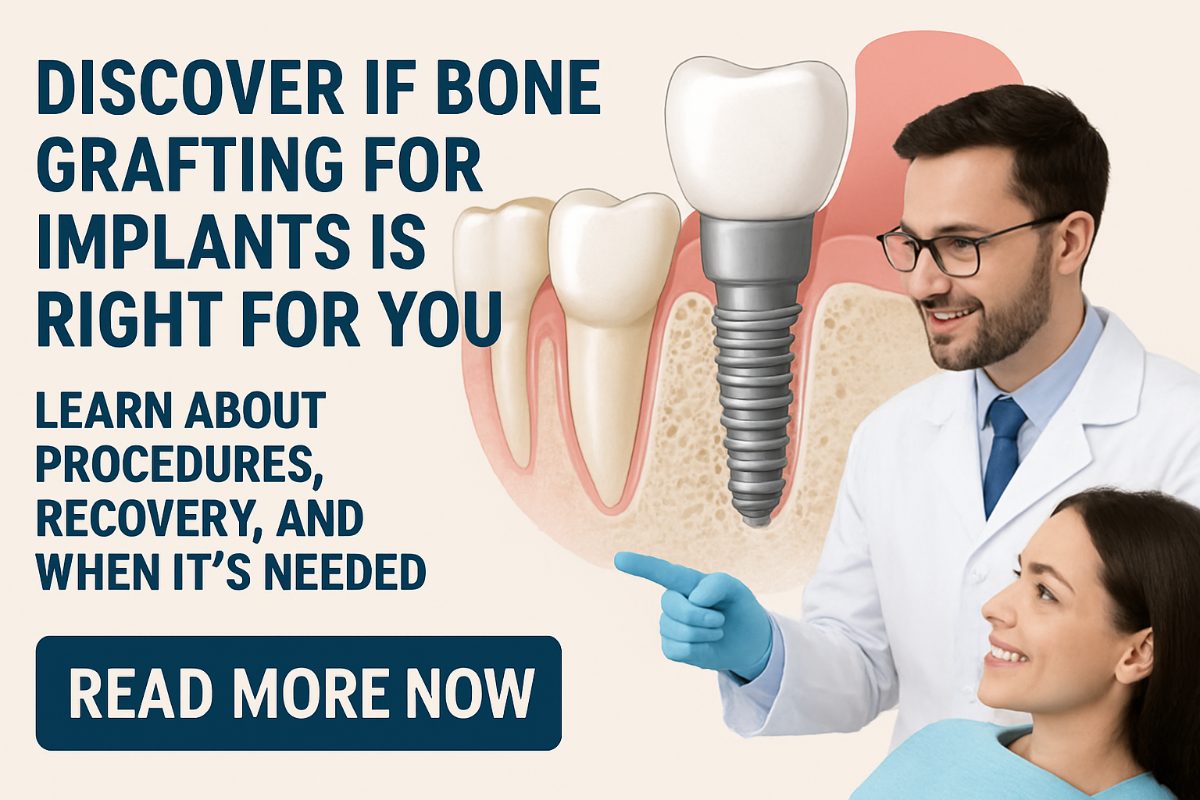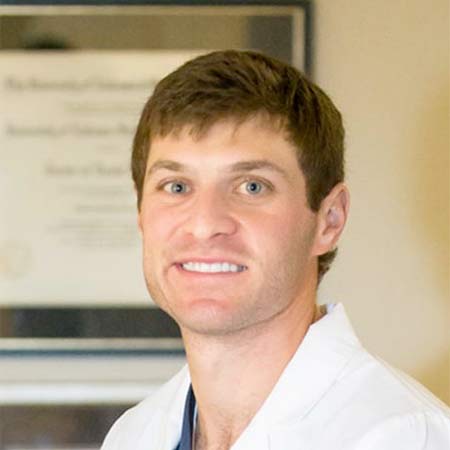Bone grafting for implants means using bone (or bone-like material) to rebuild the jaw so a dental implant has enough support. Many people need grafting when bone has shrunk after tooth loss or when infection or trauma removed bone. This short guide explains what bone grafting for implants is, why it’s used, types of grafts, what the procedure and healing look like, when grafting might be avoided, risks and costs, and key questions to ask your implant dentist.
What is bone grafting for implants?
Bone grafting for implants is a procedure to restore lost jawbone so an implant can be placed and stay stable. The main goals are to restore bone volume, give the implant a solid foundation, and reduce the chance of implant failure. Grafts create the proper shape and strength needed for long-term success.
Why bone grafting may be needed
Bone loss after tooth loss
When a tooth is lost, the nearby jawbone no longer gets normal pressure and begins to resorb. Over months to years, that shrinkage can leave too little bone to hold an implant. Bone grafting for implants rebuilds that lost volume so implants can be placed safely.
Infection, trauma, or congenital issues
Infections, accidents, or congenital bone defects can also remove jawbone. In these cases, bone grafting for implants repairs the area and reduces the risk of implant failure or complications.
Types of bone grafting for implants
Autograft (your own bone)
Autografts use bone taken from your body. Pros: highest success and best integration. Cons: need for a second surgical site and more recovery.
Allograft (donor bone) & xenograft
Allografts use human donor bone; xenografts use animal-derived bone. Both are widely used, safe, and avoid a second surgical site. They may take slightly longer to integrate than autografts.
Synthetic graft materials
Synthetic grafts (ceramics or bioactive materials) are used when natural bone isn’t necessary. They are predictable and avoid donor tissue, with typical healing timelines similar to other grafts.
Sinus lift and ridge augmentation
A sinus lift adds bone beneath the sinus for upper back teeth. Ridge augmentation widens or raises a thin ridge. Both are common forms of bone grafting for implants.
What to expect: procedure and healing
Expect a consultation with scans, followed by the graft surgery. Healing usually takes 3–6 months before implants are placed. Sedation options include oral or IV sedation. Pain is typically managed with over-the-counter or prescription meds, swelling drops in a few days, and follow-up visits ensure healing.
When bone grafting for implants might NOT be needed
Short or narrow implants, immediate implant placement, All-on-4 planning, or zygomatic implants can sometimes avoid grafting. These options are case-dependent and not suitable for every patient.
Risks, success rates, and how to improve outcomes
Risks: infection, graft failure, or slow healing. Success rates are high with proper care. Improve outcomes by quitting smoking, controlling diabetes, following post-op instructions, and choosing an experienced implant dentist.
Cost and insurance basics
Costs vary by graft type, imaging, and surgeon fees. Insurance often limits coverage for bone grafting for implants; many practices offer financing or phased treatment plans to spread costs.
Questions to ask your implant dentist about bone grafting for implants
- Do you recommend a graft and why? - What graft material will you use? - How long until I can get implants? - What are your success rates for grafts and implants? - Do you perform grafting and implants in-house or refer out?
Why choose Koplon Implant & Family Dentistry
Koplon Implant & Family Dentistry in Leeds, Alabama offers in-house digital imaging, a dental lab, sedation options, and experience with ridge augmentation, sinus lifts, and All-on-4 restorations. The team’s combined training helps patients needing bone grafting for implants in Leeds, Alabama get coordinated care under one roof.
Next steps / Call to action
Schedule a consultation or 3D imaging appointment to evaluate bone needs and explore bone grafting for implants versus alternatives. A short exam and scan will clarify your options and timeline.





